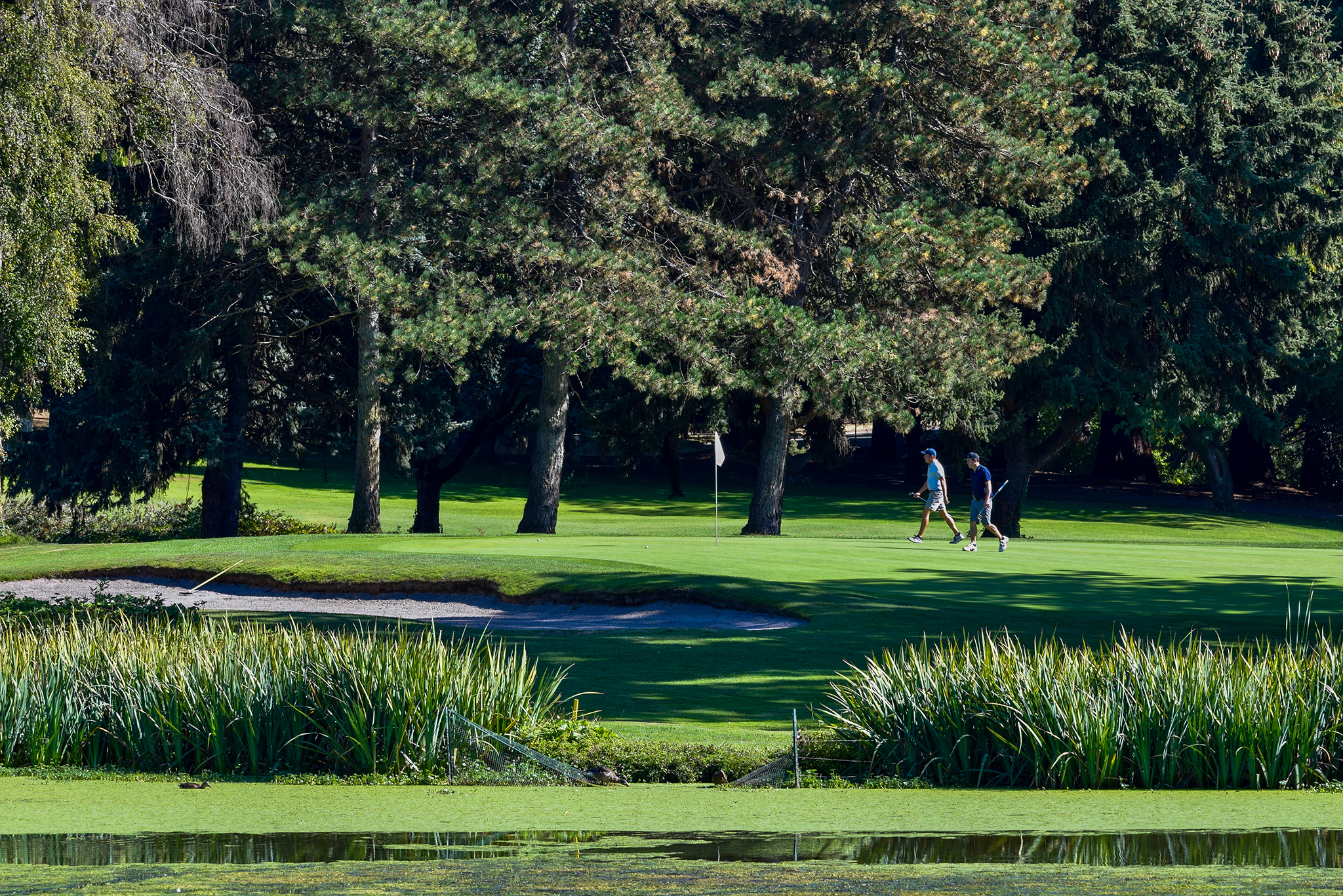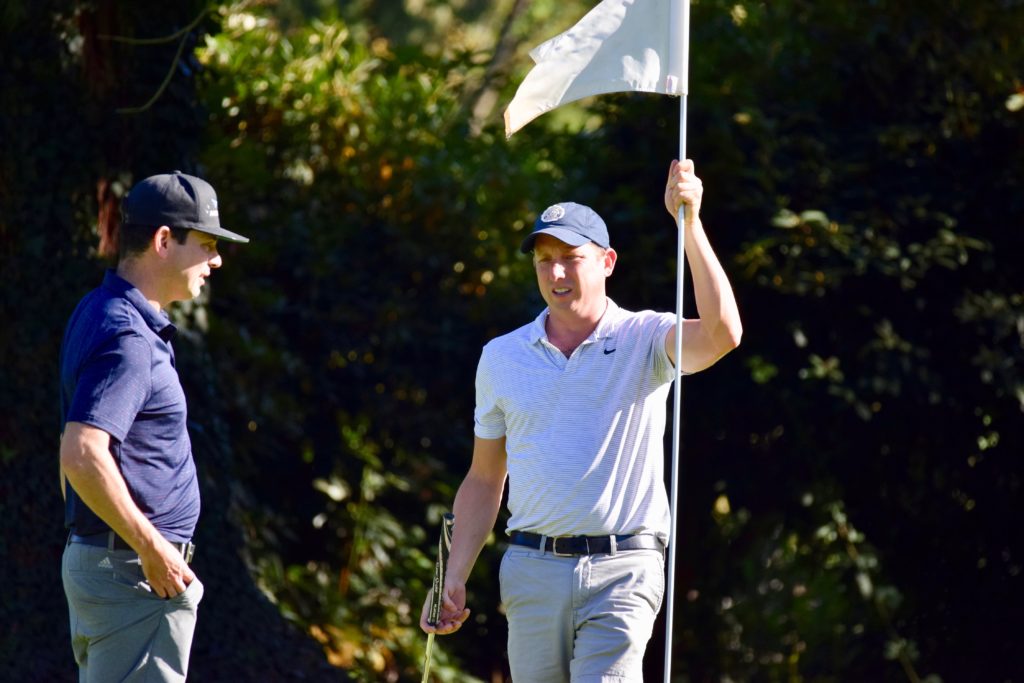Eastmoreland GC: Still vibrant after a century

Publicly owned Portland golf course reveres its history, and embraces the future
On 150 acres, wedged between railroad tracks and a now-stately neighborhood, bordered by rhododendron gardens and a private college, Eastmoreland Golf Course in Portland features tree-lined fairways, sharp dog-legs, and gorgeous par 3s over Crystal Springs Lake.
It is a classic course that hosts the city championship each year. It is a shot-maker’s course, where driver isn’t the only option on par 4s, or sometimes even the best option. Under the care of superintendent Kathy Hauff, it has the bones of a well-kept private club.
Except Eastmoreland is a muni, one of five public courses owned by the City of Portland’s parks department. And it’s 100 years old, the design of H. Chandler Egan, in his day arguably the best golfer in the United States.
When the first nine opened, June 16, 1918, World War I still had five months to go, and a pitcher-outfielder named Babe Ruth was en route to hitting a league-high 11 homeruns. For the Boston Red Sox.
Eastmoreland’s second nine would open three years later, making it the first municipal course in Oregon and Egan’s first 18-holer in a design career that would touch more than 20 facilities, including Waverley Country Club in Portland, Eugene Country Club and Pebble Beach.
To mark Eastmoreland’s centennial, a 44-year-old software salesman and proud Eastmoreland regular, Billy McGee, has established a website —www.eastmoreland100.com/ — devoted to the history of the course, a developing project that continues to solicit old photographs and memories from folks who played over the years. A documentary film is also in the works, pending additional funding, with 10 minutes completed and the goal of airing on public broadcasting.
Unlike other older courses, which can undergo dramatic changes over the decades, Eastmoreland remains relatively true to Egan’s original design. The oaks have grown up and been augmented by firs, a couple of greens have been re-done and what is now the 10th hole was previously the 18th, but the mature course looks as Egan might have envisioned it.
“It’s such a treat to play,” said 43-year-old Vince DiGiano, a near-scratch golfer who is president of the Eastmoreland men’s club and a member of the city’s Golf Advisory Committee. “The back nine is beautiful, with Crystal Springs Lake. There are nesting bald eagles, the wildlife is incredible.”
In a high-tech golf era, Eastmoreland remains relevant, at once a vexingly challenging course for low-handicappers that is playable for higher handicappers who can keep the ball in the fairway. The par-72 course plays 6,513 yards from the blue tees, and 6,091 from the whites, at slopes of 128 and 120 respectively. Weekday walking greens fee tops at $37.
“Eastmoreland, in my opinion, is the most difficult 18 holes in the city, without a doubt,” said McGee, who plays to a 5 handicap. “Public or private. … If you’re not hitting it straight, you’ll find yourself in the trees. If you don’t place your shots well, you could find yourself with really bad angles to the pin. And the greens here are as challenging as Waverley. …
“I think this course is hardest for golfers between a 9 and 14 handicap, because they’re used to trying to hit it as far as possible, and make a mistake and they’re still going to shoot low 80s. And they come out here and shoot 95.”
Adds DiGiano: “If you’re hitting it straight,and you have wedges in your hand, you can score well. But if you leave the confines of the fairway, double bogeys can pop up at any point at time. You need a good scrambling game at times to pull some pars out. …
“If you look at the city championship results every year, we have guys who come from all over, plus 2s, zeroes, and they shoot 81 and they’re like ‘how did that happen?’ Well , you tried to hit your driver too many times, you didn’t take your medicine and the next thing you know you had three doubles.”

Eastmoreland was founded out of a public-private partnership. The city perceived the need for a golf course the public could play — the only courses then were private. Representatives of the country clubs understood that their growth required more golfers, who would play the new course for 25 cents.
“Here’s where Everybody who has a golf stick may play game to his heart’s content,” read the headline in a Portland newspaper when Eastmoreland opened.
Eastmoreland would soon host the first city of Portland championship. By 1933, the USGA Public Links Championship was being held at Eastmoreland; it returned in 1990. At times the course has been listed among Golf Digest’s top 100 public courses.
With a restaurant and two-tiered driving range, Eastmoreland averages 68,000 rounds a year, based on nine-hole equivalents, and has been profitable, except for a disastrous weather year in 2017, according to Portland’s newly appointed director of golf Vincent Johnson. Some in Portland question whether the city should be in the golf business — a debate that also was waged in the 1920s — but Johnson says that commitment will continue.
“Eastmoreland, many see this as the crown jewel,” said Johnson, who played collegiately at Oregon State and professionally. “We’re very proud of it, its history. It’s served a lot of Portlanders and provided some great recreation opportunities.”
In a sport that has struggled with diversity, Eastmoreland has had a history of inclusion. An African-American golf club, the Leisure Hour Golf Club, was established there in the 1940s; the USGA’s first black national champion, Bill Wright, who won the 1959 Public Links title, established his handicap at Eastmoreland when Seattle courses were segregated.
And Johnson points to Eastmoreland’s youth programs as examples of what golf must do to grow the game. One program offers a free medium bucket of range balls and breakfast, juice and cereal, to kids 17 and under before 9 a.m. daily. Another, Free Golf Mondays, provided a day of gratis golf for juniors during the summer months.
The balls-and-breakfast program was implemented five years ago by general manager Rob Cumpston and his brother, Clark, who have had the concession to run the course since 1975.
“As golf has gotten more expensive, we just tried to do something to get young people involved in the game of golf,” Rob Cumpston said. “It gets bigger each year; this year, we’ll have 2,000 kids.
“We see a lot of kids, but we see a lot of parents, and a lot of grand-parents. This is truly a win-win. I see no reason any golf course in the country that has a driving range doesn’t do the same thing.”
With its history, its enduring challenge as a golf course and its efforts to grow the game, Eastmoreland seems poised to be around another 100 years.
“I believe so, in what it provides to the community,” Johnson said. “It does a lot of good.”
A version of this story originally appeared in Pacific Northwest Golfer Magazine, November 2018.
Tags …